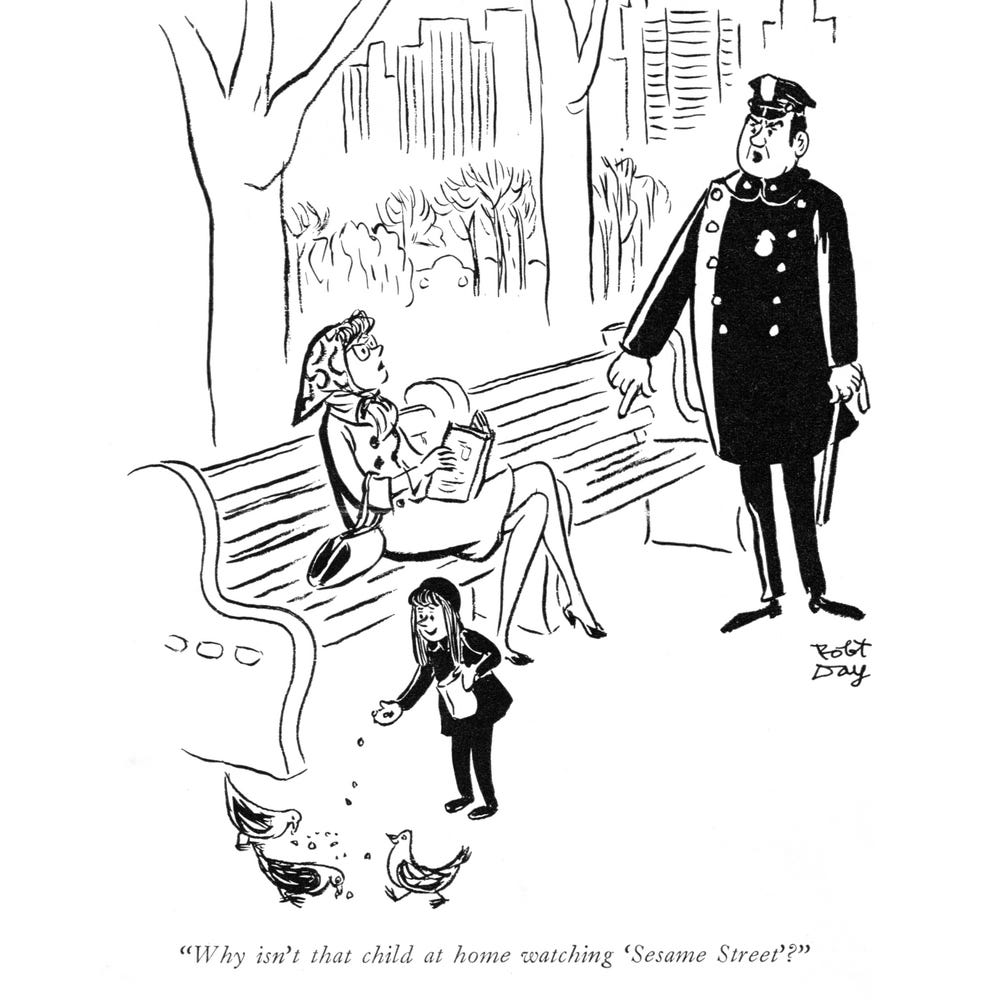If you watched the Big Game last weekend, you may have seen Big Bird co-star in a commercial for DoorDash. As a parent to two preschoolers who have recently discovered the Muppet-Verse, it got me thinking about Sesame Street and wondering how it has stayed relevant for +50 years.
It turns out that Sesame Street, and its parent not-for-profit organization Sesame Workshop, are great examples of the potential power of social enterprises and longevity through adaptation of product and distribution.

Design
In the early 1980s, when I was a preschooler, a television appeared for the first time in my family living room. Years later I would learn that my parents rented the TV, with a primary purpose of giving me the opportunity to watch Sesame Street.
As one of America’s longest running television shows (now in its 51st season), Sesame Street was first conceived as an experiment to test the then radical idea that children could be educated and entertained through the medium of television. There was a big push in the United States to figure out how to deliver early childhood education, especially when a large percentage of preschool age children didn’t attend any type of preschool before entering school at age 5 or 6. The show’s creators enlisted “100 leading specialists in early education and child development as well as researchers, writers, artists, musicians and television producers” to develop a curriculum that would form the basis for the show’s content.
This great article from The New Yorker, titled How We Got to Sesame Street, offers a historical background and summarizes the premise of the show:
“The new show would be broadcast nationally, every weekday, for an hour, in color; it would be aimed at all children, from all socioeconomic backgrounds; it would be explicitly educational, with eight specific learning objectives drawn from a list devised by experts; and its format would be that of a “magazine” made up of “one- to fifteen-minute segments in different styles”—animation, puppetry, games, stories. The “Early Childhood Television Program” would also be an experiment: its outcome would be measured…”

Innovation
Beyond being innovative in its original design when it debuted, one of Sesame Street’s original founders, Joan Ganz Cooney, described the show in 1976 as being “A Perpetual Experiment”. As a Scott Chambers (an SVP at Sesame Street) more recently elaborated:
"Our model really hasn't changed, and we have always worked the same… it starts with developing, or with identifying what kids need most. It then goes to developing curriculum that addresses and supports those needs, and then we produce content around that curriculum. Then, we leverage the latest media technology to get that content in there, in their hands and in their homes."
Learning outcomes are assessed and the cycle repeats every season.
The content of Sesame Street has evolved to address topics including military families and Covid-19, and to introduce new characters with conditions such as HIV and Autism. The format has also morphed over time. Even in the first few years of the show, the pacing and volume mellowed as the producers discovered they could better connect with children in a softer tone. The “magazine format” also shifted towards longer narrative, enabling more complex stories and teachings.
Beyond innovating their content curriculum, Sesame Workshop has had to adapt and evolve their delivery mechanism to address how technology has shifted children’s viewing formats (ie. streaming, falling DVD sales). In 2015, in order to find new ways to reach their audience and to generate revenue, Sesame Workshop signed a multi-year revenue deal with HBO that saw new episodes being released first on the paid platform, and then released nine months later on public broadcaster PBS. No matter how pragmatic (and difficult) that decision was, it’s not surprising that some viewed this as the introduction of a two-tier-muppet system, and a move away from Sesame Street’s roots.
Through its commitment to continued experimentation over +50 years, Sesame Street’s ambition for and ability to make a global impact has grown. It now reaches millions of children in 150 countries around the world through co-productions and special programming. In 2018, The LEGO Foundation committed $100 million to fund a partnership with Sesame Street, that would be the “world’s largest childhood intervention in the history of humanitarian response” focusing on Rohingya and Syrian refugee children, with the goal of impacting 9 million children over a five year period.
Sustainability
When we think about the “sustainability” of a product or object, we often tend to primarily look at its environmental impact. However, organizations, like living entities, have broader sustainability considerations, including how they can endure (staying relevant AND solvent) over time.
As a not-for-profit with a mission to: “help kids grow smarter, stronger, and kinder”, Sesame Workshop has sustained its social enterprise business model by innovating and adapting its content and delivery methods. Still, one of their greatest challenges has been its revenue model and how to remain financially viable.
The 2020 Sesame Workshop Donor Report shows they generated ~$248 million in revenue last year, including ~$122 million in content distribution/royalties (including revenue from partnerships with HBO and Apple TV+), ~$36 million in licensing and ~$89 million from donors. This resulted in an Operating Surplus of $9.6 million. While this appears to be comfortably “sustainable”, the financial picture hasn’t always been sunny days. In 2018, it had an operating income of just $1.8 million and in 2014 it had an operating loss of $11 million, which as the Hollywood Reporter noted: “[it was] the year before it migrated to HBO… The financial squeeze necessitated the deal with the pay channel. ‘It was one of the toughest decisions we ever made,’ says Steve Youngwood, Sesame Workshop's COO.“
Value
The core episodes of Sesame Street have generally been offered free to parents and children, through programming partnerships with public broadcasting and now through online channels like Sesame Street’s YouTube channel (20 million subscribers) and their Sesamestreet.org platform.
From a society and government perspective, the value proposition has also proven to be attractive. A 2015 article in The Atlantic, titled The Sesame Street Effect, quantifies the value of the show in contrast to another large scale early childhood education intervention program called Head Start (launched by the United States government in 1965):
A new study out of the National Bureau of Economic Research suggests that the TV show is “the largest and least-costly [early childhood] intervention that’s ever been implemented”... like Head Start, Sesame Street’s academic effects persisted for some time... increasing the likelihood that kids were ready for school and advanced through their education at rates “appropriate for their age.” And, in another nod to Head Start, the biggest impact was found among disadvantaged children. But unlike Head Start, Sesame Street costs very little—“pennies on the dollar,”... Head Start now costs the country about $7,600 annually per child, while, according to Kearney and Levine, the annual per-child cost of Sesame Street (in today’s dollars) was just $5. “In essence,” the study argues, “Sesame Street was the first MOOC [massive open online course].”
Thanks for coming for a read down Sesame Street! If you have a favourite Sesame Street memory/story or can think of a social enterprise that has had as large of an impact in your life, leave us a comment or reply to this email. As always, if you’ve enjoyed this week’s topic, give the 🖤 button below a click. As an extra video bonus for you, I hope you enjoy these Sesame Street themed clips:







